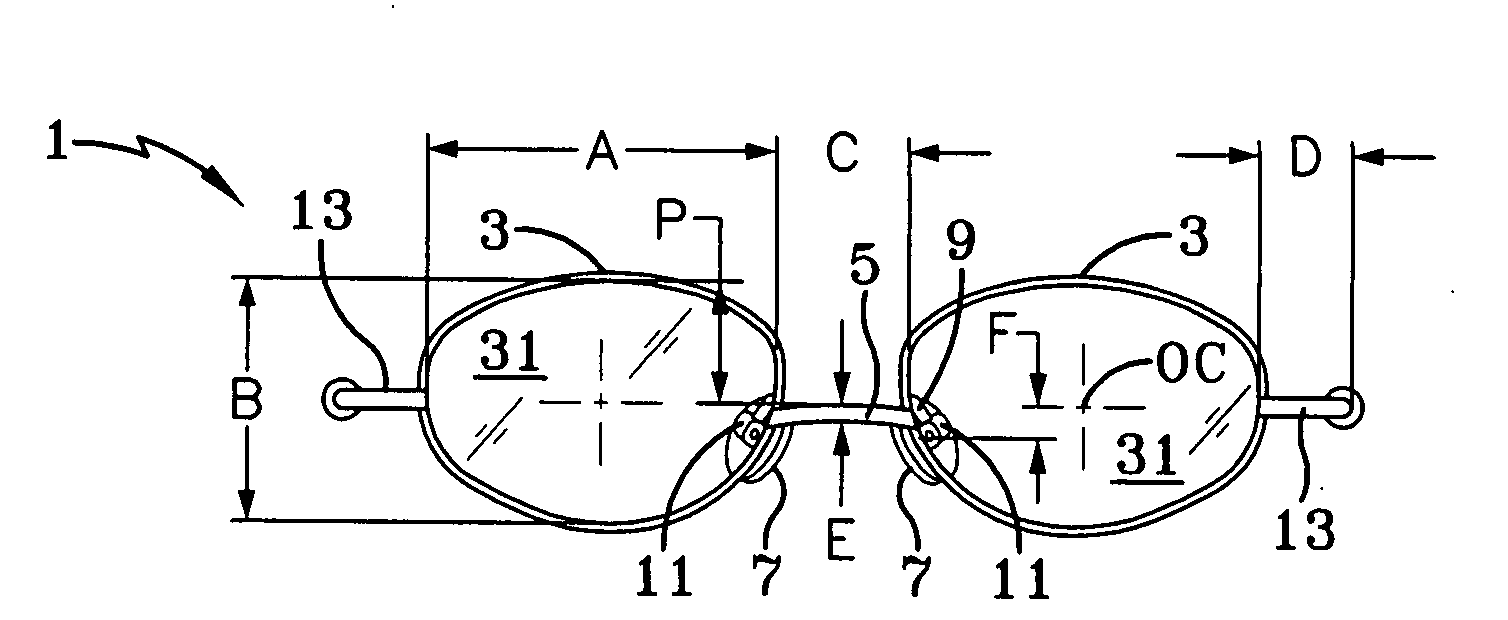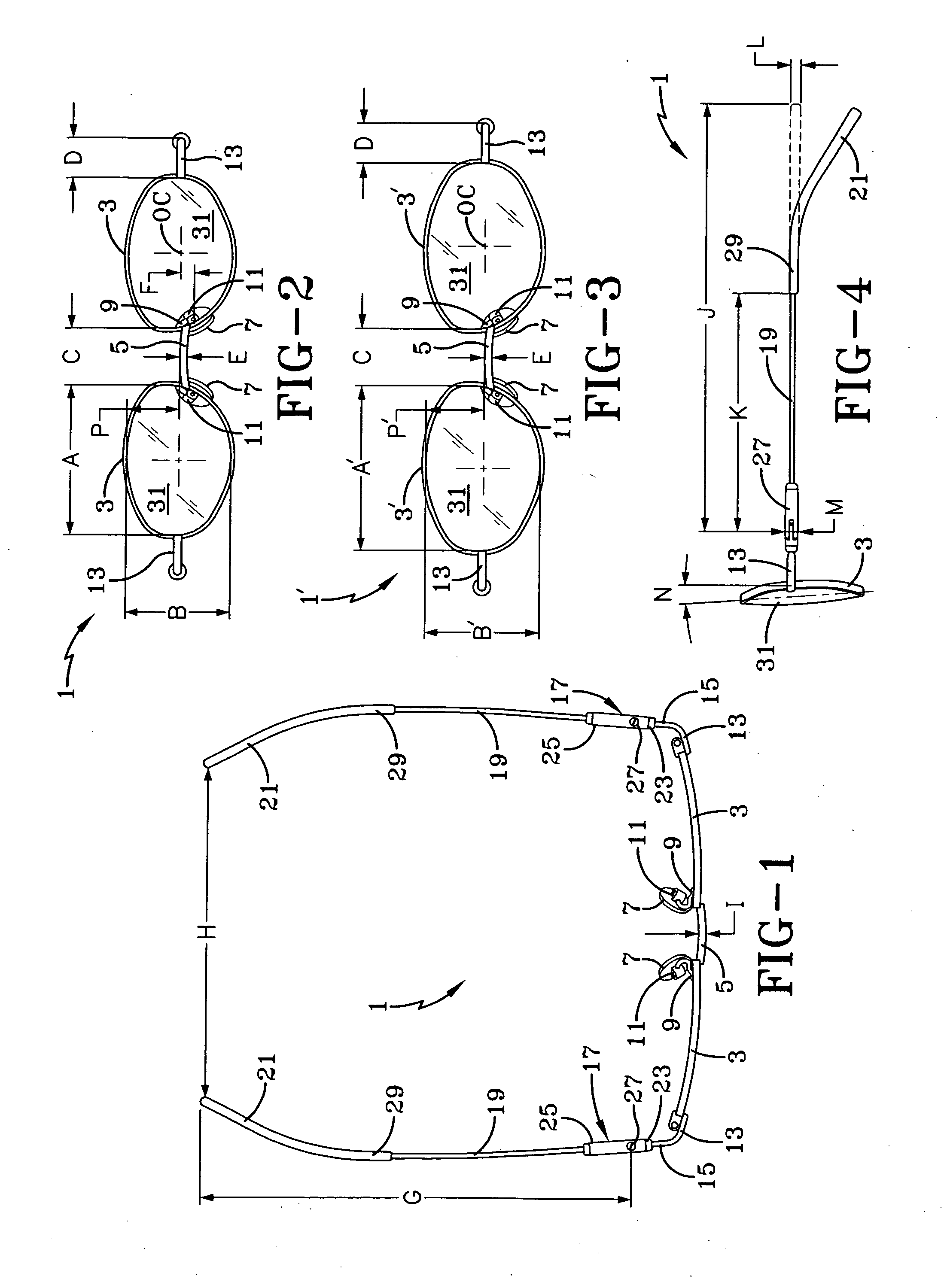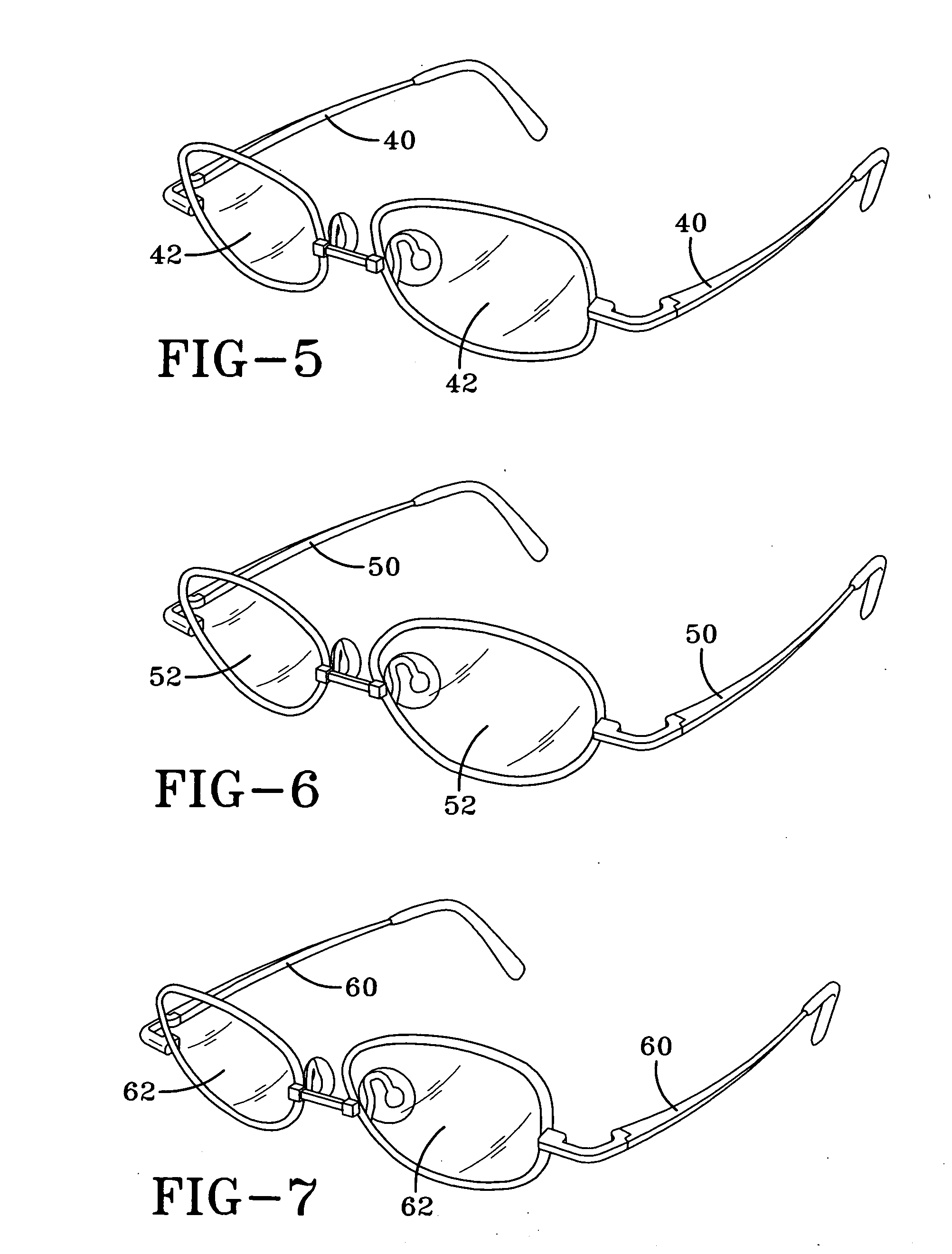Eyeglass frames for people with special needs
a technology for eyeglass frames and people with special needs, applied in the field of eyeglass frames, can solve the problems of eyeglass frames that have never been developed for people with down syndrome, eyeglass frames are incorrectly worn, and the lenses in the eyeglass frames are less effective than in the normal wear of glasses
- Summary
- Abstract
- Description
- Claims
- Application Information
AI Technical Summary
Benefits of technology
Problems solved by technology
Method used
Image
Examples
Embodiment Construction
[0027]As explained above, the present invention is directed to eyeglass frames for people with Down syndrome or facial characteristics similar to those with Down syndrome. It is also for use for people with a depressed nasal bridge such as persons from African descent and Asian descent, where conventional eyeglass frames are constructed with the bridge being relatively high with respect to the lens frames which they connect, causing the wearer's pupils to be located above the optical center of the lenses so that the wearer's line of vision is near the top of the lenses, causing distortion. The invention essentially moves the bridge lower relative to the lens frames than conventional bridges using conventional bridge frames. The temples are shorter than those of normal glasses to accommodate the location of the person's ears, which are closer to the face than they are for most Caucasian people. Furthermore, extensions are provided to accommodate the wider temple width of persons with...
PUM
 Login to View More
Login to View More Abstract
Description
Claims
Application Information
 Login to View More
Login to View More - R&D
- Intellectual Property
- Life Sciences
- Materials
- Tech Scout
- Unparalleled Data Quality
- Higher Quality Content
- 60% Fewer Hallucinations
Browse by: Latest US Patents, China's latest patents, Technical Efficacy Thesaurus, Application Domain, Technology Topic, Popular Technical Reports.
© 2025 PatSnap. All rights reserved.Legal|Privacy policy|Modern Slavery Act Transparency Statement|Sitemap|About US| Contact US: help@patsnap.com



